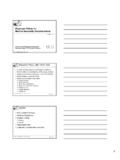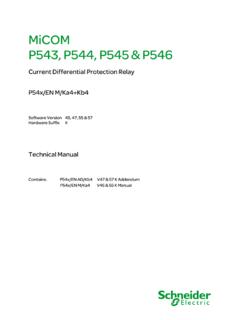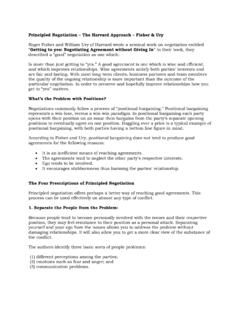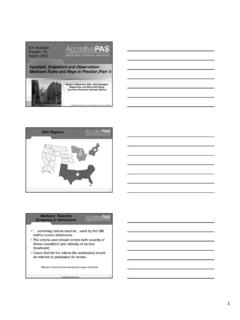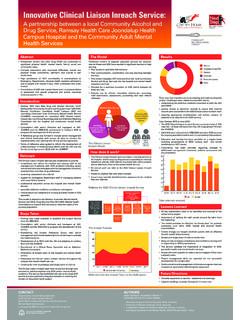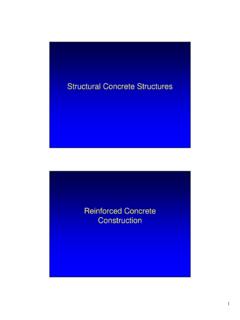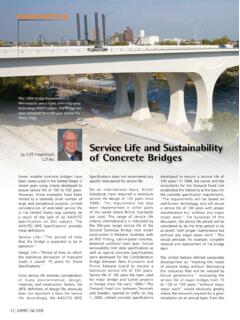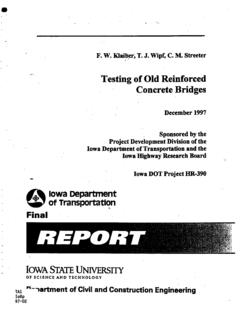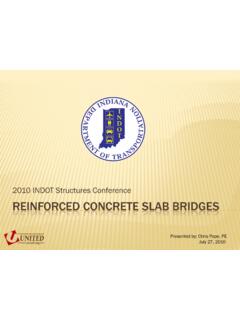Transcription of Innovation in Steel-Concrete Composite Bridges
1 8th Australian Small Bridges Conference WOLFRAM | Page 1 Innovation in Steel-Concrete Composite Bridges W. Schwarz, WSP, Australia N. Westmacott, WSP, Australia N. Jayasekera, Main Roads Western Australia ABSTRACT Steel-Concrete Composite structures have been used in construction to benefit from the elements best material behaviour. The interaction between the two materials and how to provide the most effective connection has seen multiple approaches. The latest evolution has been a steel concrete Composite design method using Composite dowels to transmit longitudinal shear forces between the compound materials steel and concrete .
2 Composite dowels are formed by a steel rib consisting of an intended cut shape ( steel -dowel) and the reinforced concrete that fills the recesses in the steel plate ( concrete -dowel). Due to its load capacity, one Composite dowel is able to replace a group of shear studs which adds economic advantages to the constructability and structural benefits of this detail. Years of research across Europe led to several Bridges being constructed based on this innovative method and have proven its effectiveness and financial benefits. The design and construction challenges of the first Australian bridge applying the Composite dowel design method will be discussed in this paper.
3 INTRODUCTION The Composite dowel construction method represents the latest evolution in steel concrete Composite design and construction method. This type of shear transmission between the compound materials concrete and steel allows Composite girders to be detailed in multiple forms, providing bridge engineers with the opportunity to design tailored, cost effective solutions for short to medium-span bridge structures. Years of research across Europe resulted in several published design guides [4],[8],[9] and a general building authority approval [10]. CONCEPT AND BACKGROUND The concept is based on the Perfobond shear connector developed for a bridge over the Caroni River in Venezuela in the late 80 s by Leonhardt Andr und Partner [7] where a stiffer connection between the compound materials steel and concrete was required to limit deflections.
4 This proposed method lacked in cost and constructability with the main disadvantage being the positioning of the reinforcement. With the improved manufacturing method of computer numerical controlled (CNC) gas cutting the idea of the Composite dowel was refined. The possibility of larger scale production reduced manufacturing costs. The revision of the original method of Composite dowels, consisting of a steel plate with punched holes welded to an I-girder, to a steel rib consisting of an intended cut shape ( steel -dowel) made installation of transverse reinforcements bars simple, preformed reinforcement cages could be lowered onto the steel beams, rather than having to have individual bars threaded through the holes.
5 8th Australian Small Bridges Conference WOLFRAM | Page 2 Plate 1: Typical reinforcement for a T-girder with a halved I-girder utilised as external reinforcement Subsequent research concluded steel profiles without an upper chord ( halved I-girders) cast in T-shaped girders are notable for the efficient use of material (refer to Plate 1). Further testing to refine the steel dowel geometry for improved fatigue capacity resulted in two recommended shapes being included in the general building approval [4] (refer to 2 & Plate 3). ADVANTAGES The T-shaped girder with a halved structural steel I-section cast in the soffit of the girder can be regarded as a reinforced concrete T-section with external reinforcement.
6 The major advantage of external reinforced girders when compared with conventional reinforced girders or pre-stressed girders is the increased lever arm (refer to Plate 4). Geometric restrictions for heavily reinforced beams due to congested reinforcement do not apply when using external reinforcement. This leads to a considerable increase in stiffness and a very economical use of the compound materials. Plate 2: Clothoid Plate 3: Puzzle 8th Australian Small Bridges Conference WOLFRAM | Page 3 Plate 4: Effective structural depth Improved fatigue behaviour The detail category is an important factor when it comes to the fatigue limit state design.
7 Composite dowels can be manufactured to achieve detail category up to 140, with 125 being the minimum to be achieved by implementing sufficient quality controls. Compared with the detail category of 80 traditional shear studs offer this is an improvement. The simplistic nature of the steel Composite dowel section reduces the locations that require fatigue assessment significantly when compared with conventional I-beam steel composites. Simplified detailing for integral Bridges In the substructure to superstructure framework corner region of integral Bridges there is sufficient material available to accommodate the compressive forces without the introduction of additional plates into the concrete .
8 During construction, the end plate detail caters for sufficient bearing capacity to place the prefabricated girders close to the support faces. This allows the detailing of relatively slender fully integral pier (refer to Plate 5) and abutment connections (refer to Plate 6). Plate 5: Pier set-up Plate 6: Abutment set-up Design for fire 8th Australian Small Bridges Conference WOLFRAM | Page 4 The fire resistance of T-shaped girders is comparable to concrete encased Composite sections. To increase the resistance to fire the experience for steel sections with encased shear connectors to achieve Composite action can be considered.
9 An embedded steel girder is generally well protected against fire. Higher bearing capacity can be obtained by higher reinforcement ratios. Those two conditions are met by the T-shaped girder. Therefor this girder is ideal for installations in areas with high bushfire risk and where design is to include fire effects in accordance with AS 2017 [1]. Safety in design There are some safety in design benefits the T-shaped girders with a halved structural steel I-section cast in the soffit offer over Teeroff-griders. Although prestressing is used daily it is still associated with a risk of tendons snapping, causing mayor injuries to workers.
10 The open internal void of Teeroff-girders are usually covered by bondek permanent formwork on site. Before installation of this the open void causes a safety hazard to workers handling the girders and installing reinforcement. For Teeroff Bridges in general, there is the requirement that the voids are self-draining, to remove any water that does enter the voids. Water ingress is generally caused by inadequate sealing of joints at service ducts, cracking of the deck allowing water to percolate into the void, and water ingress via the drainage hole in Bridges over watercourses. Personal experience of one of the authors involved in 4 years Highways Maintenance activities in the UK, had found that clearing similar drain voids from voided bridge decks, unmaintained for 20 to 30 years had resulted in significant build-up of alkaline rich water, which not only causes injuries to maintenance operatives, but also, identified significant additional dead weight that the bridge had not been designed for.



